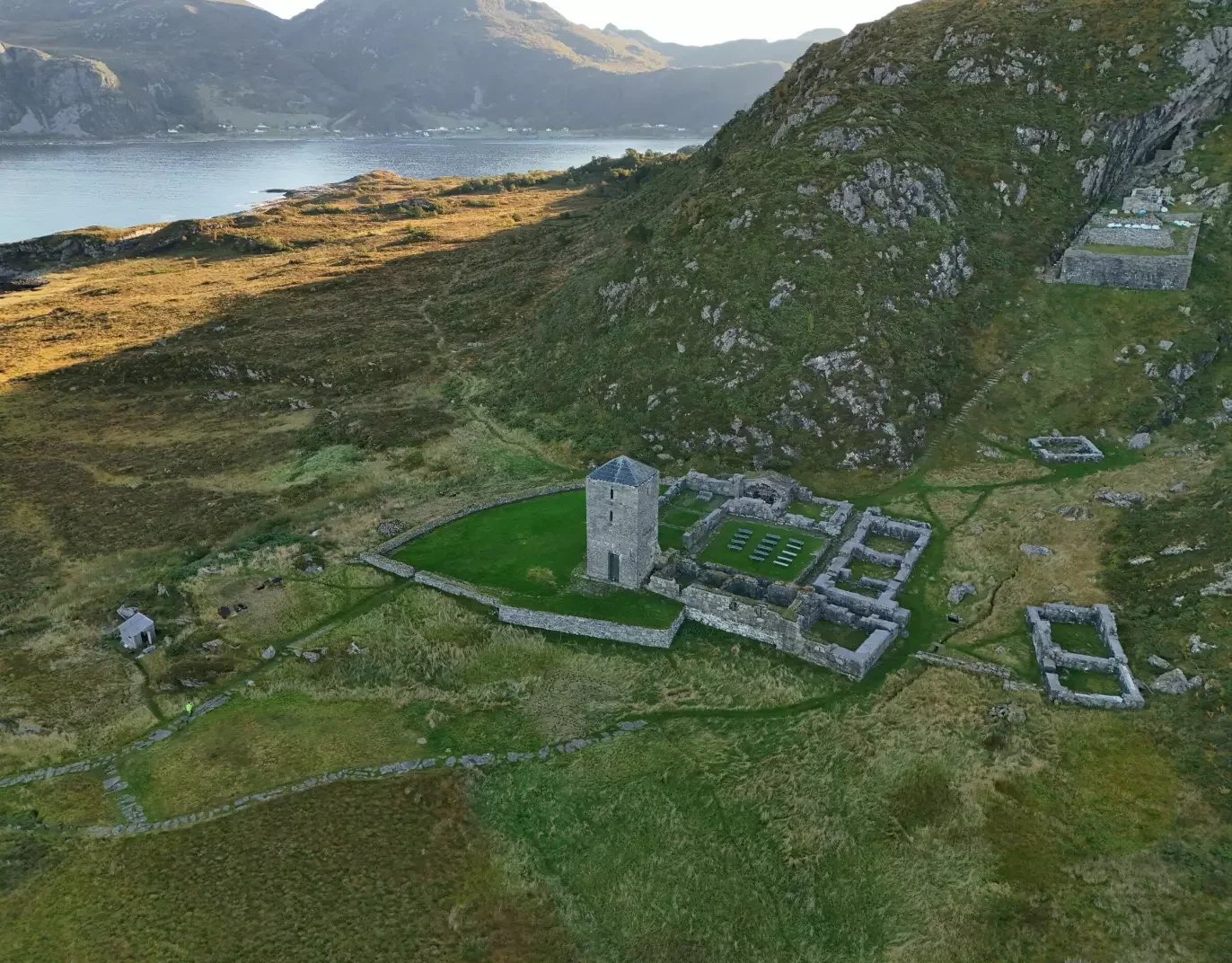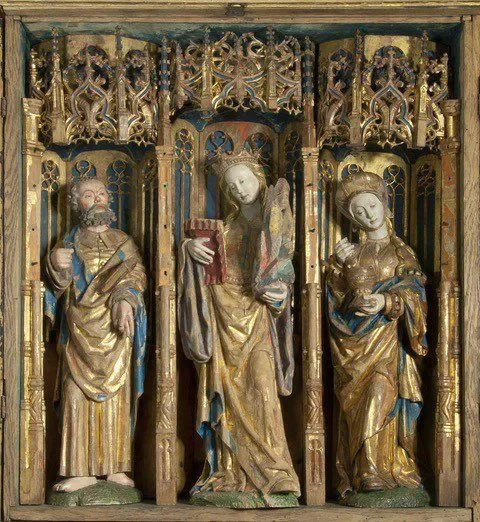
The Selja Monastery
AND THE LEGEND OF SAINT SUNNIVA
Selja Monastery – The Sacred Island and St. Sunniva
Selja Monastery (Selje Kloster) is one of Norway’s oldest monastic sites, located on Selja Island, near Stad. It was established in the 11th century, likely under King Olaf Haraldsson (Saint Olaf) or King Magnus Barefoot, to honor St. Sunniva and her followers.
Key Features of Selja Monastery:
Benedictine Monks – The monastery was run by Benedictine monks who maintained the shrine of St. Sunniva.
Ruins of a Church and Cloister – The remains of a Romanesque-style church, monastery buildings, and burial sites are still visible today.
Sunniva’s Cave – The cave where Sunniva supposedly died became a major pilgrimage destination.
By the 15th century, the monastery declined, and after the Reformation in the 16th century, it was abandoned. However, it remains an important pilgrimage site and historical landmark.
Historical Accuracy of St. Sunniva’s Story
The story of St. Sunniva is a mix of legend and Christian propaganda, written long after the events supposedly happened.
What Might Be True?
There could have been Irish or Scottish Christian refugees who fled Viking raids and ended up in Norway.
Selja may have been used as a hiding place or settlement by these early Christians.
The discovery of human remains in the cave could have been interpreted as divine proof of Sunniva’s sainthood.
What’s Likely Myth?
Sunniva’s royal Irish origins are unverified—there are no Irish sources mentioning her.
The cave miraculously collapsing to protect her followers is likely symbolic rather than historical.
The idea that King Olaf Tryggvason personally discovered her relics is more of a Christianization myth meant to legitimize his rule.
Despite these uncertainties, Sunniva’s story played a crucial role in Norway’s early Christian identity, and her cult became central in Bergen and Western Norway.
The story of Saint Sunniva – The Viking Age Legend of Selja
Saint Sunniva is a fascinating figure in Norwegian medieval legend, blending Christian martyrdom with Viking-era history. Her story is primarily recorded in medieval texts like the "Legenda Sancte Sunnive" and the "Saga of the Bishops of Bergen." She is considered Norway’s first saint and is closely associated with Selja, a small island near Stad.
Who Was St. Sunniva?
Sunniva was said to be an Irish princess, possibly of noble or royal blood.
She and her followers fled Ireland to escape a forced marriage to a pagan king.
According to legend, she trusted in God’s will and set sail with no clear destination, eventually landing on the island of Selja, near the Stad Peninsula.
The Miraculous Events on Selja
Sunniva and her followers lived in caves on the island, surviving on what little nature provided.
Locals on the mainland accused them of being Viking raiders after livestock started disappearing.
Håkon Jarl, the powerful Norse ruler (and staunch opponent of Christianity), sent warriors to investigate.
Fearing capture, Sunniva and her people prayed for divine intervention. According to legend, the cave collapsed, sealing them inside and hiding them from their enemies.
Discovery of Sunniva’s Relics
Years later, after Norway had begun converting to Christianity, King Olaf Tryggvason sent men to explore the site.
When they entered the cave, they reportedly found Sunniva’s body miraculously preserved, and the site was filled with a divine fragrance.
This was seen as a sign of sainthood, and Sunniva was later declared a saint—becoming Norway’s first known saint.
Selja Monastery and the Cult of St. Sunniva
In the 11th century, King Olaf Haraldsson (Saint Olaf) and later King Magnus Barefoot established Selja Monastery, making it an important Christian pilgrimage site.
St. Sunniva became the patron saint of Bergen and Western Norway, symbolizing Christianity’s triumph over Norse paganism.
Legacy of St. Sunniva
Feast Day: Sunniva is venerated on July 8th.
Selja Island remains a site of Christian pilgrimage, with ruins of the medieval monastery still visible.
Symbolism: Sunniva represents Christian perseverance against pagan forces and the protection of divine providence.
How Does This Connect to the Vikings?
The story of Sunniva reflects the conflict between Viking paganism and Christianity in Norway’s conversion era.
Håkon Jarl, who opposed Christianity, represents the old Viking traditions, while Sunniva’s legend aligns with King Olaf Tryggvason’s Christian mission.
The coastal setting near Stad fits the Viking world of sea travel, raids, and religious transformation.









